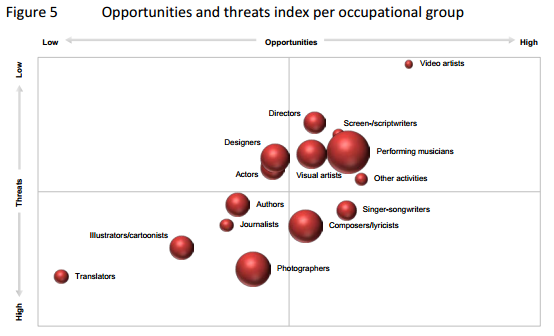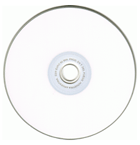HvJ EU Svensson: Hyperlinken naar beschermde werken kan zonder toestemming
HvJ EU 13 februari 2014, zaak C-466/12 (Svensson e.a. tegen Retriever) - dossier - persbericht
 Prejudiciële vragen gesteld door Svea hovrätt, Zweden. Veel besproken hier, zie IEF 12057 voor een introductie: Auteursrecht. Hyperlink-vragen. Mededeling aan een nieuw publiek wanneer een aanklikbare link wordt geplaatst. Relevantie van de openbaarheid van de locatie of beperkingen op toegang.
Prejudiciële vragen gesteld door Svea hovrätt, Zweden. Veel besproken hier, zie IEF 12057 voor een introductie: Auteursrecht. Hyperlink-vragen. Mededeling aan een nieuw publiek wanneer een aanklikbare link wordt geplaatst. Relevantie van de openbaarheid van de locatie of beperkingen op toegang.
Uit het persbericht: De eigenaar van een website kan, zonder toestemming van de houders van het auteursrecht, via hyperlinks doorverwijzen naar beschermde werken die op een andere website vrij beschikbaar zijn. Dit geldt zelfs wanneer bij de internetgebruikers die op de link klikken, de indruk wordt gewekt dat het werk wordt getoond op de website waar de link zich bevindt. (...)
In het vandaag gewezen arrest oordeelt het Hof dat het plaatsen van aanklikbare links naar beschermde werken een handeling bestaande in een mededeling vormt. Er is immers sprake van een dergelijke handeling wanneer een werk op zodanige wijze voor het publiek beschikbaar wordt gesteld dat het voor dit publiek toegankelijk is (ook al maakt het geen gebruik van die mogelijkheid). Bovendien kunnen de potentiële gebruikers van de door Retriever Sverige geëxploiteerde website worden aangemerkt als een publiek, daar het gaat om een onbepaald en vrij groot aantal gebruikers.
Het Hof herinnert evenwel eraan dat de mededeling gericht moet zijn tot een nieuw publiek, dit wil zeggen een publiek dat door de houders van het auteursrecht niet in aanmerking werd genomen toen zij toestemming verleenden voor de oorspronkelijke mededeling. Volgens het Hof is er geen sprake van een dergelijk „nieuw publiek” in het geval van de door Retriever Sverige geëxploiteerde website. Aangezien de op de website van Göteborgs-Posten aangeboden werken vrij toegankelijk waren, moeten de gebruikers van de website van Retriever Sverige worden beschouwd als een onderdeel van het publiek dat door de journalisten reeds in aanmerking werd genomen toen zij toestemming verleenden voor de publicatie van de artikelen op Göteborgs-Posten. Aan deze vaststelling wordt niet afgedaan door het feit dat bij de internetgebruikers die op de link klikken de indruk wordt gewekt dat het werk wordt getoond op de website van Retriever Sverige, terwijl dit werk in werkelijkheid afkomstig is van Göteborgs-Posten.
Het Hof concludeert daaruit dat de eigenaar van een website, zoals die van Retriever Sverige, zonder toestemming van de houders van het auteursrecht via hyperlinks kan doorverwijzen naar beschermde werken die op een andere website vrij beschikbaar zijn.
Dit zou evenwel niet het geval zijn indien een hyperlink de gebruikers van de website waarop deze link zich bevindt, in staat stelt om beperkingsmaatregelen te omzeilen die op de website waar het beschermde werk zich bevindt zijn getroffen teneinde de toegang van het publiek te beperken tot de abonnees ervan, omdat in dit geval die gebruikers door de houders van het auteursrecht niet in aanmerking werden genomen als potentieel publiek toen zij toestemming verleenden voor de oorspronkelijke mededeling.
Ten slotte verklaart het Hof dat de lidstaten niet het recht hebben om de houders van een auteursrecht een ruimere bescherming te bieden door een uitbreiding van het begrip „mededeling aan het publiek”. Dit zou immers verschillen op het gebied van de wetgeving doen ontstaan en dus leiden tot rechtsonzekerheid, terwijl de betrokken richtlijn juist beoogt deze problemen te verhelpen.
Gestelde vragen:
1. Is sprake van mededeling aan het publiek in de zin van artikel 3, lid 1, van richtlijn 2001/29/EG van het Europees Parlement en de Raad van 22 mei 2001 betreffende de harmonisatie van bepaalde aspecten van het auteursrecht en de naburige rechten in de informatiemaatschappij, wanneer iemand anders dan de houder van het auteursrecht op een bepaald werk, op zijn website een aanklikbare link plaatst naar het werk?
2. Is het voor het antwoord op de eerste vraag relevant of het werk waarnaar de link verwijst, is geplaatst op een website op het internet waartoe iedereen zonder beperkingen toegang heeft dan wel of de toegang op enige wijze is beperkt?
3. Moet bij de beantwoording van de eerste vraag onderscheid worden gemaakt tussen gevallen waarin het werk, nadat de gebruiker op de link heeft geklikt, wordt getoond op een andere website, en gevallen waarin het werk, nadat de gebruiker op de link heeft geklikt, aldus wordt getoond dat de indruk wordt gewekt dat het op dezelfde website verschijnt?
4. Kan een lidstaat een ruimere bescherming bieden aan het uitsluitende recht van auteurs door onder het begrip "mededeling aan het publiek" een groter aantal handelingen te verstaan dan die welke zijn genoemd in artikel 3, lid 1, van richtlijn 2001/29?
Het HvJ EU verklaart voor recht:
1) Artikel 3, lid 1, van richtlijn 2001/29/EG van het Europees Parlement en de Raad van 22 mei 2001 betreffende de harmonisatie van bepaalde aspecten van het auteursrecht en de naburige rechten in de informatiemaatschappij moet aldus worden uitgelegd dat het plaatsen op een website van aanklikbare links naar werken die op een andere website vrij beschikbaar zijn, geen handeling bestaande in een mededeling aan het publiek vormt.
2) Artikel 3, lid 1, van richtlijn 2001/29 moet aldus worden uitgelegd dat het eraan in de weg staat dat een lidstaat een ruimere bescherming kan bieden aan de houders van een auteursrecht door te bepalen dat het begrip mededeling aan het publiek een groter aantal handelingen omvat dan die waarop deze bepaling betrekking heeft.
 Uitspraak ingezonden door Fabienne Brison en Frédéric Lejeune,
Uitspraak ingezonden door Fabienne Brison en Frédéric Lejeune,  Uitspraak ingezonden door Carina Gommers en Carl De Meyer,
Uitspraak ingezonden door Carina Gommers en Carl De Meyer,  Survey, Creators, Performers, Digitisation, Copyright, Cluster analysis.
Survey, Creators, Performers, Digitisation, Copyright, Cluster analysis.  Uitspraak ingezonden door Thijs van Aerde,
Uitspraak ingezonden door Thijs van Aerde,  BGH over aansprakelijkheid voor illegaal filesharing van een meerderjarig familielid. Een internetabonnee is niet voor het gedrag van een meerderjarig familie verantwoordelijk wanneer er geen reden is om aan te nemen dat de internetaansluiting wordt gebruikt voor illegale filesharing.
BGH over aansprakelijkheid voor illegaal filesharing van een meerderjarig familielid. Een internetabonnee is niet voor het gedrag van een meerderjarig familie verantwoordelijk wanneer er geen reden is om aan te nemen dat de internetaansluiting wordt gebruikt voor illegale filesharing.
 Eerder ingezonden door Thierry van Innis en Dieter Delarue,
Eerder ingezonden door Thierry van Innis en Dieter Delarue, Ingezonden door Tom Heremans,
Ingezonden door Tom Heremans,  Mede ingezonden door Tobias Cohen Jehoram en Vivien Rörsch,
Mede ingezonden door Tobias Cohen Jehoram en Vivien Rörsch, 




















